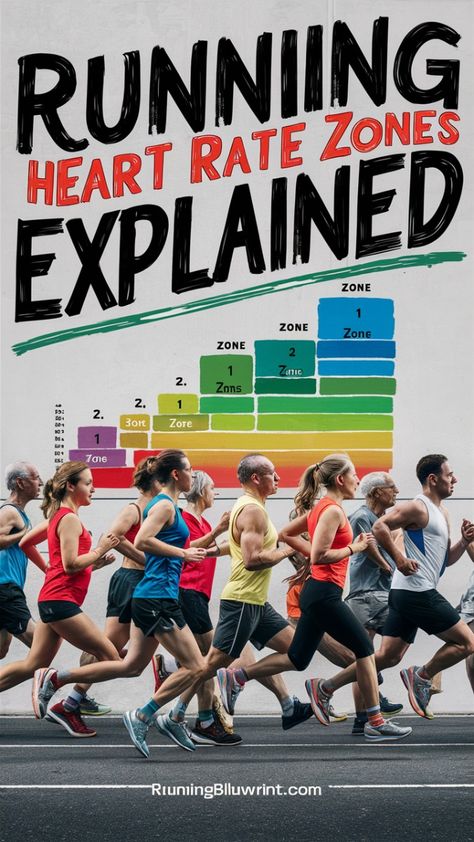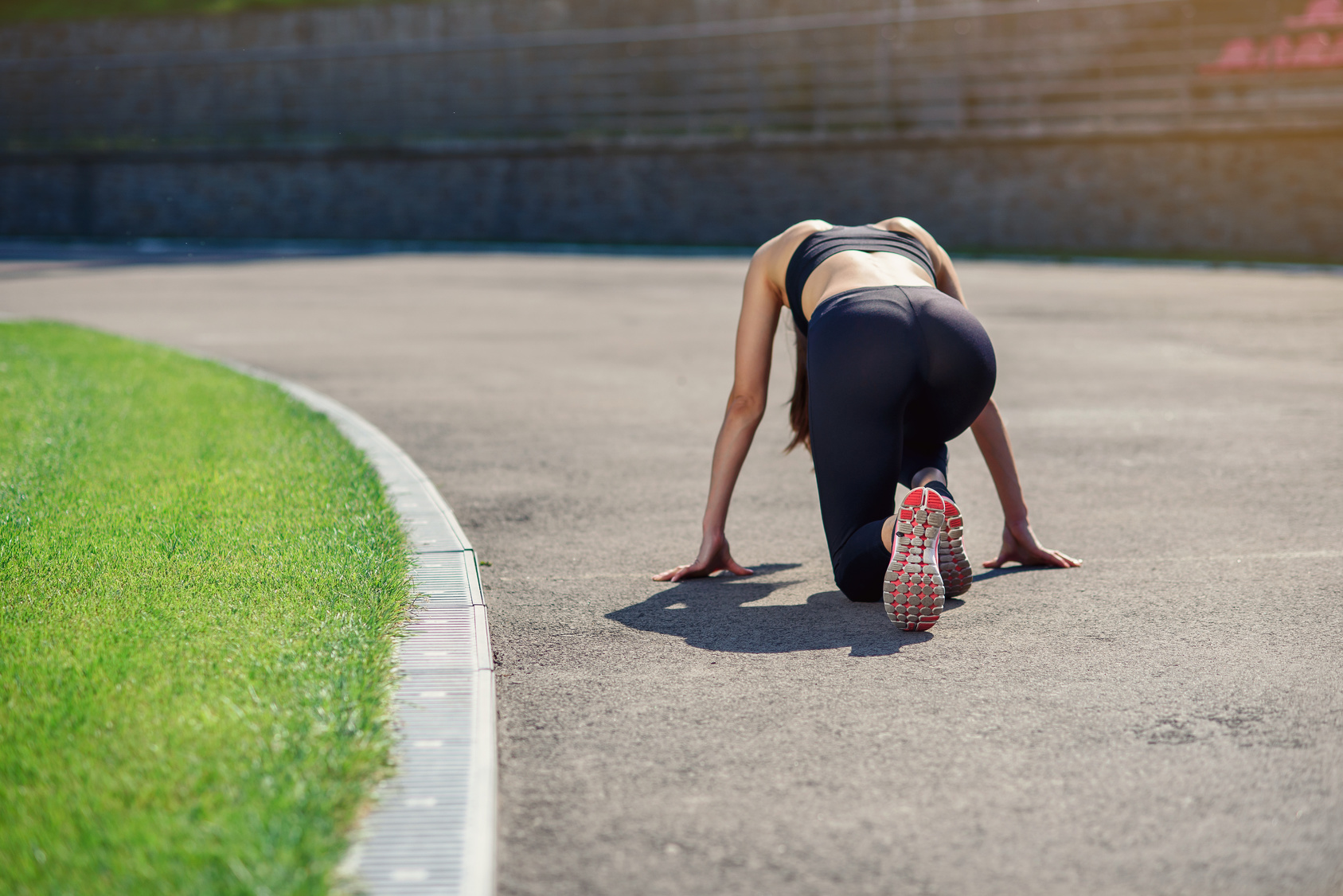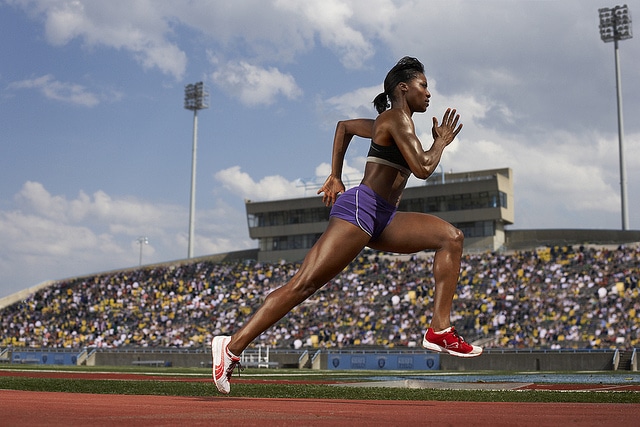Picture this: You crush a hot 16-miler, soaked in sweat, feeling strong… then it hits.
A sharp sting between your thighs.
You look down.
Blood on the shorts.
You limp into the shower—and it feels like you’re bathing in lava. Yep, chafing just ambushed your run.
I’ve been there. And if you’re logging miles and sweating hard, chances are, you have too.
Runner’s chafing—what some folks call “runner’s rash”—is the sneaky, painful saboteur that shows up during long runs, hot weather, or anytime your gear or body doesn’t cooperate.
The good news? It’s 100% preventable once you know what’s causing it—and how to outsmart it.
So if your post-run showers feel like medieval punishment, it’s time to fix that for good. Let’s get into the why, the how, and the hell no of chafing—so you can keep running strong and pain-free.
What the Hell Is Runner’s Chafing?
Runner’s chafing is straight-up skin damage caused by friction.
It shows up where skin rubs against skin, or where fabric rubs against sweaty skin—and after a few miles, it turns into a firestorm.
In technical speak, it’s called irritant contact dermatitis. In runner speak? It’s a red, stinging, raw mess.
Where it strikes:
- Inner thighs (classic skin-on-skin crime scene)
- Groin and butt (especially if your shorts are riding or your underwear sucks)
- Nipples (fellas… ever seen those bloody marathon shirts? Yeah.)
- Armpits (especially if you’ve shaved or your seams are trash)
- Under sports bra bands or chest straps (ladies know this pain too well)
- Feet (blisters are just chafing with a vengeance)
What it feels like:
It starts as a hot spot—just a little tingle or sting. Ignore it? That patch can turn into a rash, open sore, or straight-up bleeding mess. If you’ve ever winced through the post-run shower, you know.
So What’s Causing the Chafe Fest?
It’s rarely just one thing. Usually, it’s a perfect storm of friction, sweat, heat, and bad gear. Let’s break it down:
1. Friction (Skin-on-Skin or Fabric-on-Skin)
Enemy #1. Legs rubbing. Shirt bouncing. Bra band grinding. After 10+ miles? Your skin doesn’t stand a chance without protection.
2. Sweat = Trouble
Sweat is salty and sticky. It softens your skin, adds drag, and acts like sandpaper when combined with motion. Plus, when it dries, the salt left behind makes things worse.
3. Heat & Humidity
Warm weather makes you sweat more. Humidity makes it stick. And wet skin is softer skin—meaning it gets chewed up faster.
Summer runners, you know the deal: July and August are peak chafe months.
4. Bad Clothing Choices
Cotton? Trash it. It holds sweat like a sponge and turns into a rubbing machine.
Loose stuff flaps and rubs. Tight stuff digs and grinds if it’s not designed well. Bad seams, thick tags, poor stitching—all can shred your skin. Don’t trust gear you haven’t tested on a long run.
Pro insight: Cotton underwear and free race shirts are the worst. Ask any experienced runner—they’ve got scars.
5. Dry or Sensitive Skin
Dry skin = no protective oils = more friction. But weirdly, being too wet (aka soaked in sweat) is just as bad. Balance is key.
6. Your Body’s Shape & Movement
This isn’t about size—it’s about where skin rubs and how you move.
Big thighs? You might get inner thigh rub. Narrow hips? You might still chafe if your form causes rubbing.
Even elite runners with zero body fat deal with this. It’s not about weight. It’s about motion + moisture = friction.
7. Hair or Shaving
Shaved armpits or groin? That stubble will feel like sandpaper once the sweat kicks in.
Long hair? It can trap sweat. No hair? You lose some natural glide.
Everyone’s skin reacts differently—you’ve got to test and see what works for you.
8. Gear & Accessories
Anything that touches your skin during a run—hydration packs, belts, heart rate straps, phone holders—can chafe if it shifts or bounces.
The fix? Strap it snug, test it on long runs, and lube up where it touches.
Where Chafing Happens – And How to Shut It Down
Let’s talk about chafing. Not glamorous, not fun—but 100% real.
Every runner has dealt with it at some point, and if you haven’t yet… just wait. It can turn a great long run into a painful limp-fest if you’re not prepared.
Here’s the no-BS guide—body part by body part—on where chafing strikes and how to stop it before it ruins your day.
Thighs: The Classic Chafe Zone
Why it happens: Inner thighs rub together with every step, especially if your legs naturally touch (which is super common, by the way). Add in sweat, cheap shorts, or seams in the wrong spot? You’ve got a friction factory.
How to Prevent Thigh Chafing:
✅ Compression Shorts Are Your Friend: A solid pair of compression shorts (or half-tights) under your running shorts can be a total game-changer. They create a slick barrier so your thighs glide instead of grind. Lots of us layer them under regular shorts for that exact reason.
✅ Watch Out for Inner Seams: Check your shorts—if they’ve got seams right where your thighs rub, that’s a recipe for pain. Go for flat seams or seamless designs. Even running skirts with smooth built-in liners can work wonders.
✅ Lube It Up: Slather anti-chafe balm (Body Glide, Vaseline, SportShield… whatever works) before you run. Don’t be shy. Cover the whole inner thigh area—and go a little wider than you think. For long runs, stash a mini lube stick in your pocket. You’ll thank yourself at mile 15.
✅ Stay Dry When You Can: Moisture makes chafing worse. Some runners dust cornstarch or non-talc powder on top of the balm to absorb sweat. And for rainy runs? Break out knee-length compression shorts. They’ve saved more marathoners than I can count.
✅ Fit Is Everything: If your shorts bunch up or crawl up your thighs, they’re doing more harm than good. Snug-fitting shorts stay in place and cut down on the rub. If you’re using loose shorts with a liner, pin the shorts to the liner at the leg opening to stop the creep. Old-school trick that still works.
Groin: Where You Least Want Friction
Why it happens: Sweat + seams + delicate skin = big trouble. The groin’s where your inner thighs meet everything else, and things get ugly fast if your gear isn’t right. For men, it’s often the short liner or underwear causing issues. For women, it can be thigh rub or bikini-line friction. Throw in stubble from shaving, and it gets worse.
How to Prevent Groin Chafing:
✅ Ditch the Wrong Underwear: If your shorts have a good liner, you don’t need boxers, briefs, or anything underneath. Extra layers = extra seams and more sweat traps. If you do wear underwear, pick moisture-wicking synthetics with flat seams. No cotton, ever.
✅ Lube That Zone: Don’t skip this one. Lube up the whole groin area before you run—inner thighs, underwear line, and any other potential hot spots. It feels weird at first, but trust me—it’s way better than raw skin down there. Long run? Carry a reapplication stash.
✅ Shave Smart: Shaving or waxing? Time it right. Growing-back stubble can be brutal—like sandpaper rubbing with every step. If possible, plan your grooming a few days ahead. Some runners find a short trim is the sweet spot—less sweat but no razor burn.
✅ Snug Shorts That Don’t Ride Up: If your shorts creep into the danger zone, you’re toast. Look for gear that fits close and stays put. Compression shorts are gold here. Loose shorts? Try longer splits so they move with you, not against you.
✅ Steal a Page from Cyclists: Running a trail ultra? Borrow the chamois trick from the cycling world. Some long-distance runners wear bike shorts with a light chamois pad. Sounds goofy until you go 30 miles chafe-free. Use your usual lube with them and enjoy the smooth ride
Nipple Chafing: The Silent Killer of Long Runs
If you’ve ever finished a run and looked down to see two blood stains on your shirt, welcome to the club — you’ve met jogger’s nipple. It’s not pretty. It’s not heroic. But it’s real, and it takes down newbies and veterans alike.
Why It Happens
Every time you run, your shirt moves. If it’s rough, wet, or just bouncing the wrong way, it can rub your nipples raw. Over miles, that friction adds up — and boom, you’re bleeding from the chest like an action movie gone wrong.
Guys get this more often, since we don’t have the built-in defense system of a sports bra. But don’t get cocky — women aren’t totally immune. A lousy sports bra can cause just as much pain, especially around seams or straps.
Cold, wet weather? That’s a recipe for disaster. A soaked cotton shirt is like sandpaper. And your skin doesn’t stand a chance.
How to Save Your Nipples (And Your Dignity)
1. Cover Them Up
Old-school trick that works: slap on a couple of Band-Aids. Cross ‘em if you want full coverage. Or go fancy and use stick-ons like NipGuards or NipEaze — these were made for this exact problem.
👉 Coach tip: Flexible fabric bandages work best. Some runners cut out the pad and just use the sticky ring around the nipple — lets it breathe but still shields it.
2. Lube ‘Em Up
If you’re not taping, you better be lubing. Products like Body Glide, Vaseline, or lanolin (yep, the stuff breastfeeding moms use) work great.
One runner once told me, “Lanolin saved my t**tle.” I still laugh about it, but he wasn’t joking — he was in pain till he found that miracle goop. If it works, it works.
But heads-up: sweat can wash lube away. For really long runs, combo it with tape. Belt and suspenders, baby.
3. Wear the Right Shirt
Tight is better than loose here. Compression shirts or smooth tech fabrics that hug the body won’t rub like a flappy tee. If it’s raining, go snug or go shirtless (if you can pull that off in your area without a ticket).
Ladies, make sure your sports bra fits well and doesn’t have seams across the nipples. A soft liner, minimal movement, and Body Glide where it rubs — that’s your armor.
4. Keep It Dry
If you’re a heavy sweater, moisture is the enemy. Some ultra runners go full MacGyver — taping gauze over the area or using nursing pads in the shirt. Most of us don’t need that, but if you’re desperate, don’t knock it.
Armpit Chafing: The Sleeper Injury That Hurts Like Hell
Your arms swing a lot when you run. Thousands of reps. And if anything’s rubbing in your armpits — fabric, stubble, even skin-on-skin — you’ll know fast. One minute you’re cruising. Next, your underarms are on fire.
Why It Happens
Two culprits:
- Skin rubbing skin (your upper arm grinding against your torso)
- Fabric or seam rubbing (shirt sleeves doing the dirty work)
Armpit hair? If it’s short and sharp, it’s like running with sandpaper under your arms. Shaved? Razor burn can mess you up too.
How to Beat the Burn
1. Trim or Don’t — Just Pick a Side
Shaving? Use a sharp razor and leave a day before your next run so your skin chills out. If you’re growing it out, let it really grow — long hair lies flat and protects better than stubble.
The danger zone is that half-inch stubble stage. It looks harmless. It’s not.
2. Lube the Pits
Before your run, slather on some anti-chafe balm — Body Glide, SportShield, or something neutral that won’t sting. Some runners use powder-dry antiperspirants, but be careful — if you’re already raw, that’ll light you up.
Coach rule: lube before you need it.
3. Wear the Right Shirt
Your shirt can either help or hurt. Sleeveless tops? No seam = no problem. But if you like sleeves, go for raglan cut or shirts that move seams off the shoulder.
Avoid shirts that pinch the armpit tight — but also ditch anything so loose it flaps and rubs. Find that Goldilocks fit: not too tight, not too baggy, just right.
Ladies — wide-side sports bras can cause underarm rub too. If that’s your issue, hit the area with a dab of lube before strapping in.
4. Keep It Dry (If You Can)
Armpits = sweat city. Some runners dust with cornstarch or baking soda, but those can clump with heavy sweat, so test it first. Usually, good lube and a decent shirt will do the trick.
Feet: The Blister Battlefield
Let’s talk feet. If you’re logging miles, your feet are taking the hits—and if you’ve ever peeled off your socks to find a raw, oozing blister, you know exactly how real this is.
Blisters are basically your skin tapping out from too much friction. Whether it’s your sock seams, toes rubbing together, or shoes grinding your heels into hamburger, that constant rubbing turns into raw skin. Add heat, sweat, or a tiny grain of trail grit? Boom. You’re in Blister City.
Most common spots: backs of the heels, tops of the toes, and in-between toes. Basically, anywhere there’s rubbing + moisture = potential carnage.
Here’s how to stop the foot carnage before it starts:
1. Ditch Cotton Socks – Forever
I can’t say this loud enough: cotton socks are the devil. They hold moisture, bunch up, and create the perfect environment for skin to shred.
Go for moisture-wicking synthetic blends or merino wool. Not only do they breathe better, they reduce friction and dry faster. Bonus points if they have padding or double layers in hotspot zones.
Brands like Wrightsock make anti-blister double-layer socks—basically, the two layers rub against each other instead of your foot. If between-the-toes blisters are your personal hell, check out toe socks like Injinji. Yeah, they look weird. But they work. I’ve seen them save many a runner’s race.
2. Lube or Powder – Pick Your Weapon
Some runners are Team Slick, others are Team Dry. Either works—just don’t mix both unless you want gooey sock soup.
- Vaseline, Trail Toes, or other foot balms can help protect common friction zones: balls of feet, toes, heels.
- Prefer a dry feel? Go with a foot powder or something like 2Toms BlisterShield (it’s got PTFE, which reduces friction like Teflon).
Pro tip: For ultras or long hikes, pick one approach—don’t layer powder over lube unless you enjoy running on cake batter.
3. Get the Shoe Fit Right
Too tight = pressure points and black toenails. Too loose = sliding and toe bang. Either way, you lose.
Make sure:
- You’ve got a thumb’s width of space in the toe box (your feet swell during long runs).
- Your heel doesn’t slip—heel lock lacing can help lock that foot in place.
- The shoe isn’t a repeat offender. If a certain pair gives you blisters every time, it’s not you—it’s the shoe.
4. Keep Feet Dry – Swap Socks Mid-Run if Needed
Sweat, rain, puddles—they all soak your socks, and wet skin = easier tearing.
If you’re doing long runs or races:
- Change into dry socks at the halfway mark.
- Carry a spare pair on ultras or long trail runs.
- Feel a hot spot forming? STOP. Pop the shoe off. Tape it, slap on a blister plaster, whatever. Don’t wait for it to explode.
Blisters don’t happen instantly—they build. Catch it early, and you save your race.
5. Try Double-Socking (If You’re Desperate)
Blisters won’t quit? Try liner socks under your regular socks. The thin inner layer moves with your skin, while the outer sock takes the beating. Or grab a pair of socks already built that way.
Just know—it can make your shoes feel snug. If they’re already tight, double-socking might not be your move.
How to Prevent Chafing While Running
(Because nothing ruins a run faster than burning skin and regret)
Let’s be honest — chafing is the uninvited guest no runner wants to deal with. It’s raw, painful, and it always seems to show up just when you’re getting into a groove. The good news? It’s almost completely preventable if you take the right steps before you lace up.
I’ve had long runs derailed by skin-on-skin warfare more times than I’d like to admit. And I’ll tell you right now — prevention is way easier (and less painful) than dealing with the aftermath.
Here’s the playbook to stay chafe-free, no matter how far or sweaty you’re going:
✔️ Lube the Trouble Spots Like Your Life Depends on It
This is rule #1. Don’t mess around with dry skin and friction. Grease up the hot zones before every run — especially if you’re going long, or the weather’s working against you.
Use whatever works for your skin:
- Body Glide (a stick-style classic)
- Vaseline or A&D ointment
- Squirrel’s Nut Butter (my go-to on trail runs)
- SportShield (great silicone-based option)
Hit all the friction zones:
Inner thighs, groin, armpits, nipples, under bra straps, between toes… you know your body best. If it’s ever burned before, hit it with lube.
💡 Pro tip: Pack a mini tube or packet for long runs or races. Mid-run reapplication might just save your skin — literally.
And yes, I’d rather forget my watch than my anti-chafe stick. It’s that important.
✔️ Dress Like You’ve Been Burned Before
Cotton? Toss it. That stuff’s a chafe trap when it gets wet. You want moisture-wicking, technical fabric that keeps sweat off your skin and doesn’t cling.
Pick clothes that fit you just right — not baggy, not squeezing-the-life-out-of-you tight. Smooth seams, snug fit, no rough edges. Flatlock stitching is your friend.
Ladies: sports bras matter. Seams, straps, elastic — it all adds up. Find one that supports and smooths, not rubs you raw.
Also: cut out annoying tags, test new gear before long runs, and remember this golden rule:
If it rubs on a 3-miler, it’ll destroy you on a 10-miler.
✔️ Get Your Undergear Game Dialed
This one’s personal — there’s no one-size-fits-all here.
- Some runners go commando.
- Some swear by compression shorts.
- Some layer up like a knight in armor.
Just remember the no-cotton rule. Always go synthetic or technical. Breathable, fitted, and seamless is best. If your shorts have a built-in liner that feels good? Ditch the undies. If not, wear something designed for movement, not lounging.
Ladies, same goes for underwear: seamless, synthetic, or skip it if your tights have a gusset. Your comfort is the only rule.
✔️ Stay as Dry as You Can (Yes, Even in Summer)
Sweat + friction = chafe central. So do what you can to stay dry-ish.
Try these:
- Cornstarch-based powders (safe for sensitive areas) to absorb extra sweat
- Anti-sweat headbands or wristbands to keep sweat from dripping into trouble zones
- Loosen or remove your hydration pack or hat mid-run for airflow
- Drink water! Hydration thins out the salt content of your sweat, which can reduce irritation
It won’t be perfect, especially on humid days, but every little bit helps.
✔️ Race-Day Rule: No New Gear, Ever
Let me repeat that louder for the people in the back:
Never try new gear on race day. Ever.
What you race in should be battle-tested on a few training runs. This includes:
- Shorts
- Bra
- Socks
- Shoes
- Fuel belt
- Backpack
- Even sunglasses (yes, I’ve seen runners get ear chafe from brand-new shades)
Do a full test run with your race-day outfit. Discover the issues before the gun goes off.
✔️ Accessorize Like a Pro
If you’ve got a spot that always gives you grief? Don’t just hope for the best — protect it.
Use:
- Nipple guards or KT tape
- Blister-resistant socks
- Moleskin on high-rub zones
- Kinesiology tape along bra lines or backpack straps
- Gaiters on trail runs to keep sand and grit out
Ultrarunners tape their feet before every race for a reason. Prevention beats damage control every time.
✔️ Match Your Gear to the Weather
Rainy day? Tighter clothes work better. Loose fabric gets heavy, soggy, and rubs like crazy. A brimmed hat can help redirect rain away from your neck and chest.
Hot and sunny? Go light. Light colors, breathable fabric, and maybe a touch of antiperspirant on your lower back or chest can slow the sweat drip.
Trail run? Cover up. Gaiters, longer shorts, and smooth-fitting tights can keep dirt and gravel out of unwanted places. A single grain of sand in your sock is a slow-rolling nightmare.
Also: practice. If your race is in humid July, don’t train only in cool April mornings. Get your body and gear used to the conditions you’ll race in.
How to Treat Chafing After a Run
You crushed your run, feeling strong… until you hit the shower and suddenly felt that all-too-familiar burn.
Congrats — you’ve joined the proud, not-so-happy club of runners who’ve been betrayed by their own skin.
Chafing happens to the best of us. Inner thighs. Underarms. Nipples. Groin. Anywhere skin rubs or fabric irritates, it’s fair game.
But don’t panic.
Here’s your step-by-step chafing survival plan — so you can get back to running and not walking like a cowboy on day three of a rodeo.
1. Clean It Gently (No Bravery Points Here)
First step? Clean the area — but gently. Don’t blast it with hot water or scrub like you’re exfoliating for a spa day.
Lukewarm water is your friend. Use mild soap—unscented if possible. If the skin’s raw, even water alone is fine to start. Think: rinse, don’t irritate.
Pro tip: That firestorm you feel in the shower? Yeah, that’s normal. Bite your lip and get it done. But whatever you do—don’t use harsh soap, scented gels, or your roommate’s peppermint body wash. Trust me.
2. Ditch the Alcohol and Peroxide
Don’t reach for the rubbing alcohol like you’re in an old-school war movie. It’ll burn like hell and slow down healing.
Hydrogen peroxide, iodine, and harsh disinfectants = bad idea. They dry out the skin, delay recovery, and make you hate life for a few minutes.
Stick to mild soap and water. If you’re into natural stuff, witch hazel or diluted vinegar might help—but again, diluted. The goal is clean and calm, not scorched earth.
3. Pat, Don’t Rub
After washing, pat the area dry with a soft, clean towel. No rubbing. No friction. No aggressive towel kung fu.
If you’re extra sore, use a hair dryer on cool to dry the area with zero contact. It may look weird, but it feels amazing.
4. Lube It, Soothe It, Protect It
Now comes the healing part. This is when you go full TLC.
Use one of the following:
- Petroleum jelly (Vaseline)
- Aquaphor
- Zinc oxide (yep, the diaper rash stuff)
- Aloe vera gel
- Natural oils (coconut, Shea butter) — if the skin isn’t broken
These keep the skin moist and protected while it heals.
Got broken skin or think you see signs of infection? Use a little Neosporin or Polysporin — unless things look gnarly (in which case, see a doc).
Avoid: Anything with alcohol or fragrance. That stuff will sting and piss your skin off more.
If it’s really painful and swollen, a touch of 1% hydrocortisone can calm things down — just don’t slather it like sunscreen, and skip it on deep wounds unless your doc says otherwise.
5. Cover It (If It’s Still Rubbing)
If clothes will rub against the chafe zone, cover it up. Non-stick bandages, hydrogel pads, or Tegaderm film work well.
- Nipple chafe? Slap on a bandage.
- Inner thighs? Use breathable gauze or medical dressings (not a Band-Aid unless you like pain).
Let it breathe if you’re at home with loose clothes — or better yet, no clothes. Fresh air heals. Tight jeans don’t.
6. Chill Out and Let It Heal
You don’t have to take a rest day, but if your skin’s screaming at you, don’t be a hero.
If every step feels like sandpaper, do something low-impact instead: upper-body weights, swimming (as long as chlorine won’t make it worse), or just… rest.
And for the love of your skin, wear soft clothes. No seams. No compression tights. Give the area time to recover.
7. Watch for Signs of Infection
Chafing should heal fast—mild stuff in 1–2 days, worse stuff in a week. But if the spot gets:
- Redder
- Warmer
- Swollen
- Starts leaking pus
That’s your cue to go see a doc.
Light chafing? You can usually run again the next day with some protection. Deeper wounds? Give it a few more days. Listen to your body, not your ego.
When It’s More Than Just a Chafe
Look, most chafing is harmless — annoying, sure, but it heals up quick with a little rest, some ointment, and better gear choices.
But every now and then, it gets ugly. And if you keep brushing it off like, “Eh, it’s just a little skin rub,” you might end up with something that needs a doc’s attention.
Here’s when you need to stop being tough and start being smart:
Redness That Spreads or Swells Up
If that chafed patch starts swelling like crazy or the redness creeps beyond the original spot — it’s not just irritation anymore.
That’s a sign of infection or deeper inflammation.
Skin Discoloration
Got weird brown or purplish tones around the chafe?
That ain’t normal healing.
Chronic rubbing or an infection can mess with pigmentation. Don’t ignore that.
Pus or Crusting
This one’s obvious: if you see yellow crust, oozing, or smell something funky, that’s not your standard runner’s rash.
That’s infection — could even be impetigo-type stuff. You need real meds, not just a dab of Vaseline.
⚠️ Pro tip: Don’t just slap on random ointments. See a doc and let them tell you what’ll actually work — antibiotic cream, maybe even pills if it’s bad.
Bleeding That Won’t Quit
A little blood? Normal. Marathoners know all about bloody nipples.
But if it’s non-stop bleeding or a wound that won’t scab — especially from a fall or deeper abrasion — go get it looked at. You might need stitches or proper wound care.
Heat and Tenderness
Chafed skin will sting. But if it feels hot — like, noticeably hotter than surrounding skin — and tender to the touch? That could be cellulitis or deeper infection.
Fever or Feeling Like Crap
If the spot’s infected bad enough to give you chills or a fever, it’s beyond “just a skin thing.”
Don’t be the tough guy who ends up in the ER because they didn’t want to “bother” their doctor.
It’s Not Healing After Several Days
You should see real improvement within 2–3 days of cleaning, resting, and treating it right.
If after a week, it still looks raw or hurts like day one?
Might be a fungal infection like intertrigo — and you’ll need antifungal meds to fix it. Not something you can “run through.”
Don’t Let a Little Chafe Steal the Joy
Chafing might seem like a “small” issue — until it wrecks a long run, a race, or an entire week of training.
The sting of sweat on raw skin?
The dreaded post-run shower burn?
That penguin walk after a long run gone wrong?
Yeah… not fun.
But here’s the good news: chafing is preventable.
Like I always tell my runners — a 5-second fix beats 5 days of pain. That means:
- Slapping on some Body Glide before a long run
- Choosing gear that doesn’t rub you raw
- Hydrating and keeping your skin happy
That’s not “extra.” That’s smart. There’s no award for bleeding nipples or shredded thighs. You’re not “tougher” for toughing it out. You’re just hurting yourself needlessly.
Find what works for your body:
- Vaseline instead of fancy balms? Go for it.
- One pair of shorts that never fails you? Buy five and toss the rest.
- Love merino wool socks? Wear them even in summer.
The goal is comfort that lasts through the miles — not just surviving the run, but enjoying it.















